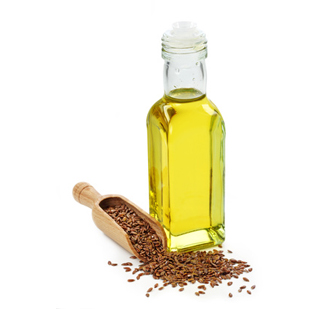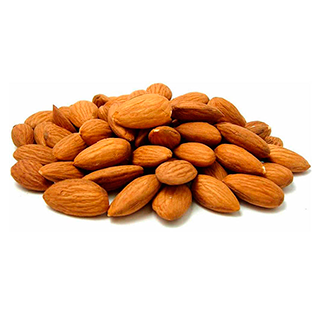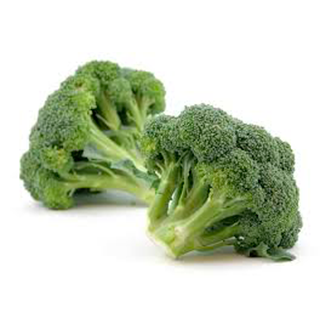Omega-3 and Omega-6 Fatty Acids: Their Ratio and Why It Should Be High
Omega-3 and Omega-6 hold a specific place among the fatty acids. Their complex, which is also called vitamin F, is essential for normal functioning of human body. These acids were discovered in the first half of the XX century, but gained popularity only in the late seventies, due to the big study, which discovered that the people, who eat a lot of sea fish, have better cardio health.
Although it's quite easy to supply the body with Omega-3 and Omega-6, certain groups of people need to use the nutritionals. The risk group includes those, who follow a very strict diet (e.g. low-calorie diet), vegetarians, people who have conditions of digestive system (which decrease the digestion of nutrients) and pregnant women. The human body is unable to produce these two acids, so it’s necessary to provide a steady daily intake of them in one way or another.
The Omega 3 Fatty Acid
The Omega 3 fatty acids play the essential role literally since the first day of human life. If during the pregnancy fetus doesn’t receive enough of them from the mother’s body, there will be high risks of neurological and ophthalmic diseases for the child. The Omega-3 acids fight inflammations of different nature. Moreover, these acids decrease the risks of arthritis, depression, heart maladies and certain kinds on cancer (for example, breast cancer). The sufficient presence of Omega-3 in the body aids the normal functioning of brain and cardiovascular system. That’s the exact reason why the products containing these useful acids are included in special diets for people with heart conditions. Moreover, Omega-3 is used in treatment of diabetes, skin diseases and high blood pressure. Finally, Omega-3 is a kind of building material for human hair and nails.
According to the data of the American Heart Association, the rough minimal norm of Omega-3 intake is 250mg, optimal – 1g, maximal – 7-8 grams. However, these numbers aren't accurate and need to be specified according to the individual's lifestyle, daily calorie intake, body parameters etc.
Sea Fish

| Salmon, atlantic, wild(100g) | ||
| Omega 3 | Omega 6 | Omega 6 to Omega 3 Ratio |
| 1.8 g (720% DV) | 0.026 g (0.6% DV) | 0.0 : 1 |
As it was mentioned in the very beginning of the article, the biggest ratio of Omega-3 is observed in sea fish. You've probably heard that this product is very beneficial for health. Partly, fish owes this glory to Omega-3. The fried Atlantic salmon, for instance, has 1.8 grams of it per one hundred grams of the product. No doubt, if you eat the delicious meaty sea fish regularly (just like the people living at the sea), you will enjoy not only the rich taste, but also many health benefits brought by Omega-3. The nutritional and taste qualities of fish are best when it's fresh and has received a minimal amount of thermal conditioning. Eat fatty and semi-fat fish (herring, mackerel, salmon, trout, sardines and tuna) at least three times a week.
Canola Oil and Flax Oil

| Oil, canola(100g) | ||
| Omega 3 | Omega 6 | Omega 6 to Omega 3 Ratio |
| 7.6 g (3040% DV) | 16.47 g (366% DV) | 2.2 : 1 |
| Oil, flaxseed, cold pressed(100g) | ||
| Omega 3 | Omega 6 | Omega 6 to Omega 3 Ratio |
| 40.5 g (16200% DV) | 11.8 g (262% DV) | 3.4 : 1 |
The less costly sources of these acids include canola oil (1 tablespoon of it will be enough to cover the daily norm) and flax oil (1 teaspoon daily). Although these oils have the peculiar taste, including them in your diet regularly is a very rewarding practice. The easiest and most convenient way to organize it is to season your salads using these oils. If you can’t adjust to the taste, use olive oil.
Nuts

| Nuts, walnuts, black, dried(100g) | ||
| Omega 3 | Omega 6 | Omega 6 to Omega 3 Ratio |
| 7.8 g (3120% DV) | 32.4 g (277% DV) | 4.2 : 1 |
Raw or dried nuts are the perfect replacement of the unhealthy crunchy snacks, such as potato chips. All nuts hold a lot of fat (healthy, but nonetheless harmful in excessive quantities), so eat only up to eight nuts per day. This will be enough to cover your daily norm of Omega-3.
Vegetables

| Spinach(100g) | ||
| Omega 3 | Omega 6 | Omega 6 to Omega 3 Ratio |
| 0.67 g (268% DV) | 0 g (0% DV) | 0.2 : 0 |
| Cauliflower(100g) | ||
| Omega 3 | Omega 6 | Omega 6 to Omega 3 Ratio |
| 0.037 g (15% DV) | 0.011 g (0.3% DV) | 0.3 : 1 |
| Melons, honeydew(100g) | ||
| Omega 3 | Omega 6 | Omega 6 to Omega 3 Ratio |
| 0.046 g (18% DV) | 0.035 g (0.8% DV) | 0.8 : 1 |
| Peas, green(100g) | ||
| Omega 3 | Omega 6 | Omega 6 to Omega 3 Ratio |
| 0.035 g (14% DV) | 0.15 g (3% DV) | 4.3 : 1 |
| Broccoli(100g) | ||
| Omega 3 | Omega 6 | Omega 6 to Omega 3 Ratio |
| 0.021 g (8% DV) | 0.017 g (0.4% DV) | 0.8 : 1 |
At a lower rate, Omega-3 is also present in spinach, cauliflower, melon, peas and broccoli. Yet more proof that you should eat more fresh veggies and fruit! Vegetables serve as a perfect side dish for fish and can be eaten in combinations, which only helps Omega-3 to be digested by your body. However, fruit must be eaten only separately, after the main course is digested (this usually takes 3-4 hours).
Humans digest plant fats better than animal fats. Nevertheless, doctors recommend eating both kinds regularly, so be sure to eat both fish and veggies.
The Omega 6 Fatty Acid
As to the Omega-6 fatty acids, they also add to the healthy brain functioning (decrease the risk of mental conditions), help the development of skin cells, take part in the process of hair and bones growth and control metabolism. These acids are used in treatment of allergy, eczema, osteoporosis and PMS. They also take part in formation of nails and hair, as well as removing harmful toxins from the body.
Lack of this nutrient leads to the increase of cholesterol level in blood, frequent viral diseases and weak immune resistance, obesity, problems with spinal column and its disks, slack skin and hormonal disruptions.
The daily norm of these acids is, again, individual. The numbers, named by doctors, vary from 4.5 to 8 grams per day (5-8% of calorie intake).
Corn Oil, Soya Oil, Greek Nut Oil and Sunflower Oil
| Oil, corn, all purpose salad or cooking(100g) | ||
| Omega 3 | Omega 6 | Omega 6 to Omega 3 Ratio |
| 1.16 g (464% DV) | 53.5 g (1189% DV) | 46.2 : 1 |
| Oil, soy, fully hydrogenated(100g) | ||
| 6 g (2400% DV) | 46.7 g (1033% DV) | 7.5 : 1 |
| Oil, sunflower, linoleic(100g) | ||
| 0.037 g (15% DV) | 29 g (644% DV) | 783 : 1 |
The main sources of Omega-6 are the same as those of Omega-3, plus corn oil, soya oil, Greek nut oil and sunflower oil. They all contain around fifty grams of Omega-6 per one hundred grams of product. Using these oils as a seasoning will be enough to sufficiently cover the daily norm.
Pumpkin Seeds and Sesame Seeds

| Seeds, pumpkin and squash seed kernels, dried(100g) | ||
| Omega 3 | Omega 6 | Omega 6 to Omega 3 Ratio |
| 0.36 g (144% DV) | 19.28 g (428% DV) | 107.8 : 1 |
| Seeds, sesame seeds, whole, dried(100g) | ||
| 0.36 g (144% DV) | 24 g (533% DV) | 55.7 : 1 |
Moreover, pumpkin seeds and sesame seeds can also be considered a good option (5 and 7 grams per 100 grams of product, respectively). Use them as an individual snack (in small portions) or add to other dishes.
Chicken Eggs

| Egg, whole, fresh(100g) | ||
| Omega 3 | Omega 6 | Omega 6 to Omega 3 Ratio |
| 0.074 g (30% DV) | 1.48 g (33% DV) | 20 : 1 |
Chicken eggs (egg yolks) may also be considered a decent source of Omega-3. According to the newest studies, cholesterol, which is contained in eggs, doesn’t strongly affect the overall cholesterol level of the human body. So don’t be afraid to include eggs in different forms to your menu.
Despite all the benefits of the fatty acids, the old faithful wisdom “All in good measure” must be followed at all times. All the nutrients, including the fatty acids, are safe if their rate is right. In some cases, the excessive intake doesn't bring harmful results. For instance, eating too much manganese won't do anything wrong to you. However, fatty acids can be very dangerous, because in high doses Omega-3 dilutes the blood, causing long, excessive bleedings even from minor injuries, possibility of hemarthrosis (hemorrhage to the join cavities) and hypotony. Omega-6, on the contrary, thickens the blood and increases the possibility of inflammations.
There is a good reason why this article tells both about the Omega-3 and the Omega-6 acids. This is because these two fatty acids work together and their effectiveness depends on the ratio between them. The recommended balance of the Omega-3 and 6 in nutrition must be 1:2 and 1:4.
If your lifestyle doesn’t let you regulate your diet and get enough Omega 3 and 6, use the dietary complements, for example fish oil in form of capsules or liquid. Fish oil is one of the safest biologically active additives.
Nowadays there exist a lot of nutritionals, which may promise you anything from perfect hair to eternal youth. Many of the regular and fitness nutritionals base their effectiveness on the vitamin F (Omega-3 + Omega-6). Don’t let the advertisements fool you, always read the contents of every additive, estimate the amount of one or another nutrient and follow the right quantities. Sometimes the deficiency of a nutrient is better than excess.









